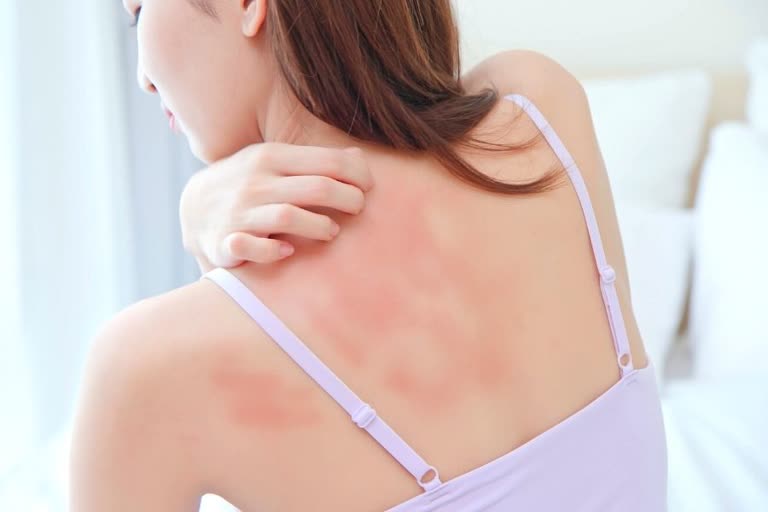Most of the parts of India have welcomed the summer season, which is fun until the intense heat of the sun begins to affect our skin. Various skin conditions may be experienced in this season, one of which is ‘heat rashes’. This can happen to a person of any age but can be more problematic for people with very sensitive skin. But what causes such a condition, let us know about it.
Understanding the cause
Dermatologist Dr. Saba Shaikh, associated with Derma Clinic, Mumbai says that heat rash is the commonest skin condition during summers. When someone has a heat rash, tiny red bumps may appear on the skin, typically on the neck, back and chest, causing itching, irritation and a burning sensation.
Basically, we sweat a lot during summers, but at times, dust, dirt, dead skin cells or bacteria blocks the sweat ducts. Since sweat remains stuck underneath the skin, small red rashes begin to appear on the skin. Dr. Saba says that although it is not a serious, but the itching and burning sensation in the skin can be troublesome.
Home remedies for skin rashes
An Indore-based Naturopath and Homeopath, Dr. Smita Kamble says that prickly heat or heat rashes do not usually require expensive treatments and a few precautions and home remedies are helpful to a great extent. Here are some easy home remedies:
- Aloe vera:
Dr. Smita says that aloe vera works well on numerous skin conditions and is helpful in the case of prickly heat as well. It can be applied regularly on the skin and even fresh aloe vera gel, which is more beneficial, can be applied for 15-30 minutes and washed off. It will provide quick relief from the itching and irritation. - Fuller’s earth (Multani mitti):
Fuller’s earth, commonly referred to as multani mitti in India is considered an ideal treatment for heat rashes, due to its cooling properties. You can add rose water to multani mitti and apply on the affected area, which will help reduce the itching and burning sensation. - Raw potato juice:
The application of raw potato juice on the site also provides great relief. Extract and apply the juice on the affected area and leave it for about 10-15 minutes. Then, rinse the area with cold water. Besides treating heat rashes, it also has many other skin benefits. - Henna (Mehendi):
Our expert says that the application of henna paste can also be very helpful. Basically henna has natural antibacterial properties, astringents and other such ingredients that keep the skin naturally cool. - Turmeric:
Alike henna, turmeric too has antibacterial and antiseptic properties and the application of turmeric paste, mixed with rose water, for 5-10 minutes on the affected area provides great relief. - Cucumber juice:
Dr. Smita mentions that applying cucumber juice on the affected area is helpful to a great extent.
Other things to remember
- Bathing in cold water is relieving.
- Try to keep your skin cool by sitting under a fan or by other means.
- Wear light-colored, loose clothes, so that the sweat dries out easily and all the body parts are exposed to fresh air.
- Be extra careful with the body parts where sweat is likely to get accumulated, such as armpits, thighs, inner thighs and back. Also, after bathing, dry these areas with a clean towel properly and apply non-fragrance, low-fragrance or medicated talcum powder.
Dr. Smita also stresses on the fact that although home remedies are very effective, it is important to know if a person is allergic to a certain ingredient that they may apply on the skin, as it can further worsen the condition. Apart from this, even if the home remedies do not provide relief and the condition worsens contact a dermatologist immediately.
Also Read: 7 factors leading to skin-related problems



